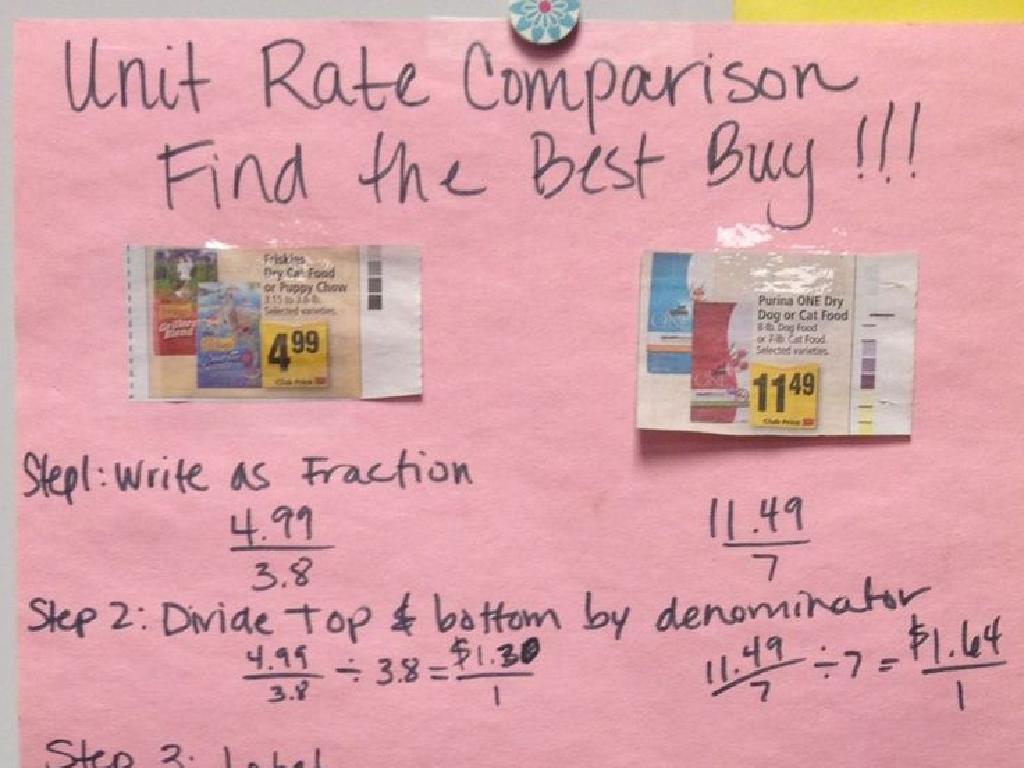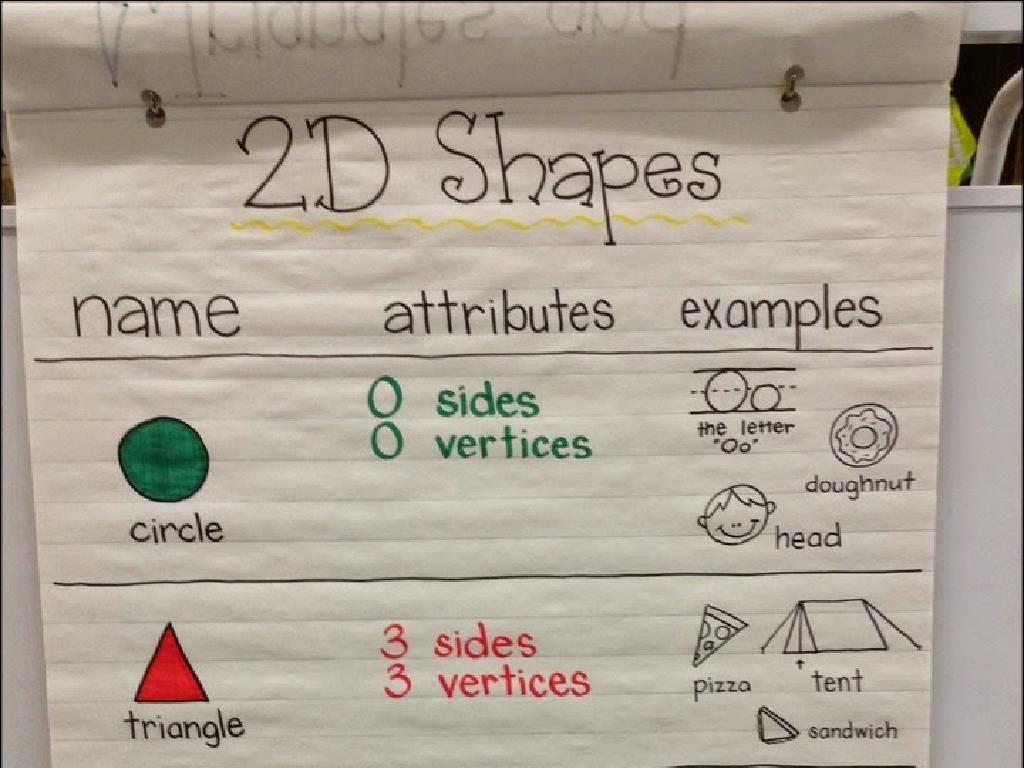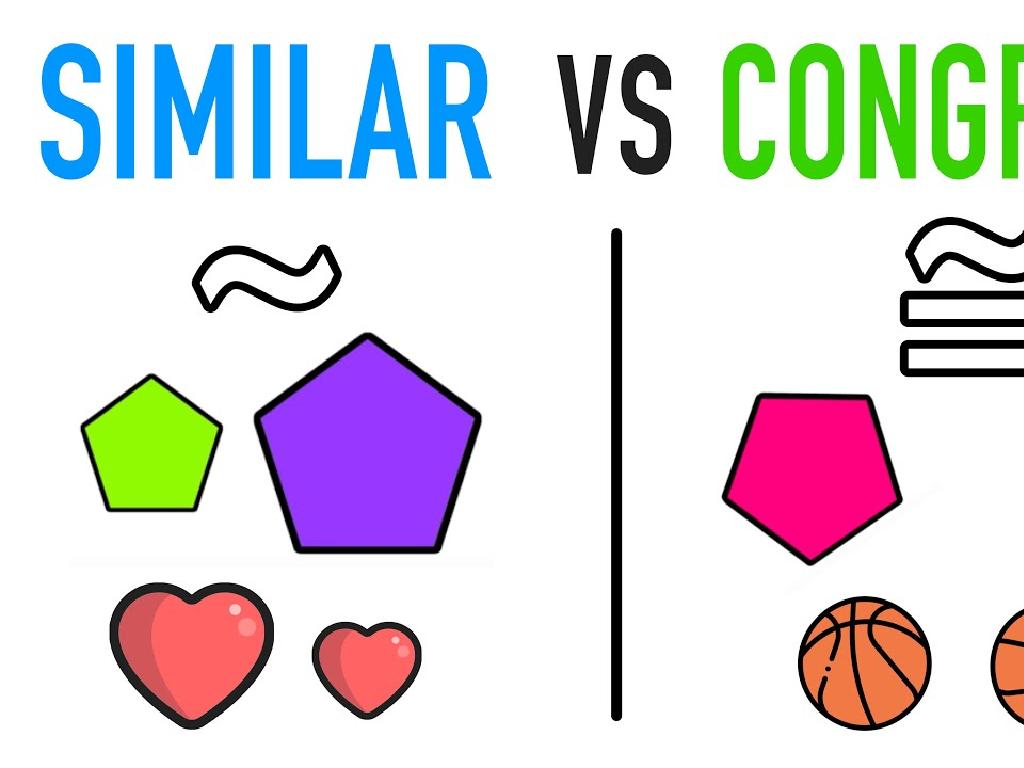Prime And Composite: Up To 20
Subject: Math
Grade: Fourth grade
Topic: Factors And Multiples
Please LOG IN to download the presentation. Access is available to registered users only.
View More Content
Prime and Composite Numbers
– What are prime numbers?
– A prime number has only two factors: 1 and itself, like 2, 3, 5, 7, 11, 13, 17, 19.
– Explore composite numbers
– Composite numbers have more than two factors, such as 4, 6, 8, 9, 10, 12, 14, 15, 16, 18, 20.
– Building blocks of numbers
– Understanding primes and composites helps us break down numbers into their basic parts.
– Relevance in math
– Knowing the difference helps with simplifying fractions and finding common denominators.
|
This slide introduces the concept of prime and composite numbers, which are the fundamental building blocks of all numbers. Prime numbers can only be divided evenly by 1 and themselves, making them unique. Composite numbers, on the other hand, have additional divisors. This knowledge is crucial for students as it lays the groundwork for more advanced mathematical concepts such as least common multiples and greatest common factors, which are essential for operations with fractions. Encourage students to memorize prime numbers up to 20 and to practice identifying the factors of composite numbers within the same range.
Exploring Factors
– Understanding factors
– Numbers that multiply to give another number
– Example: Factors of 6
– 1, 2, 3, and 6 multiply to make 6
– Activity: Find factors of 8
– Work with a partner to list factors of 8
|
This slide introduces the concept of factors to fourth-grade students. Begin by explaining that factors are numbers that can be multiplied together to result in another number. Use 6 as an example to show that 1×6 and 2×3 both result in 6, so 1, 2, 3, and 6 are factors of 6. For the activity, pair students up and have them find all the factors of 8. They should list the pairs of numbers that multiply to make 8, such as 1×8 and 2×4. This exercise helps reinforce their multiplication skills and understanding of factors. Provide guidance as needed and encourage students to check each other’s work. Possible variations of the activity could include finding factors of other numbers, using manipulatives to visualize factor pairs, or creating a factors chart.
Exploring Prime Numbers
– Prime numbers: two factors
– A prime has only 1 and itself as factors
– Examples: 2, 3, 5, 7, 11…
– These are primes less than 20
– 2: The only even prime
– All other even numbers can be divided by 2
– Prime numbers up to 20
|
This slide introduces the concept of prime numbers, which are numbers that have exactly two distinct factors: 1 and the number itself. Provide examples of prime numbers up to 20 to help students recognize the pattern. Highlight that 2 is a special prime number because it’s the only even prime number; all other even numbers are divisible by 2, making them composite. Encourage students to memorize the prime numbers up to 20 as it will be useful for future math concepts. In the next class, we can have an activity where students identify prime and composite numbers from a list to reinforce their understanding.
Exploring Composite Numbers
– Composite numbers definition
– A number with more than two factors
– Examples of composite numbers
– 4, 6, 8, 9, 10, 12, 14, 15, 16, 18, 20
– Activity: Find composites on chart
– Use your chart to circle numbers with more than two factors
– Understanding factors of composites
– Factors are numbers we can multiply to get composites
|
This slide introduces composite numbers to fourth-grade students. Begin by explaining that composite numbers are numbers that have more than just two factors, unlike prime numbers which only have two factors (1 and themselves). Provide examples of composite numbers up to 20 to help students recognize patterns. For the activity, students will use a number chart to identify and circle all the composite numbers, reinforcing their understanding of the concept. As a teacher, be prepared to guide them in identifying factors for each number and explaining why certain numbers are composite. This hands-on activity will help solidify their understanding of composite numbers.
Prime or Composite?: Understanding Numbers
– What makes a number prime?
– A prime number has only two factors: 1 and itself
– What makes a number composite?
– A composite number has more than two factors
– Using factor trees and division tests
– Factor trees break down numbers into factors; division tests check divisibility
– Practice: Is 10 prime or composite?
– 10 has factors 1, 2, 5, 10. It’s composite!
|
This slide introduces the concept of prime and composite numbers, which is fundamental in understanding the building blocks of mathematics. Start by explaining that prime numbers are like the ‘atoms’ of math, indivisible and unique, while composite numbers can be broken down into smaller parts. Show how to use a factor tree to break down a number into its prime factors or use division to test if a number is divisible by other numbers besides 1 and itself. Use the number 10 as a class activity to apply these concepts, demonstrating that since 10 can be divided evenly by numbers other than 1 and itself, it is a composite number. Encourage students to create their own factor trees and perform division tests with other numbers to reinforce the lesson.
Special Case: The Number 1
– Is 1 prime or composite?
– 1 has only one factor
– Unlike other numbers, 1 only has one factor: 1 itself
– 1 is neither prime nor composite
– Numbers need at least two factors to be prime or more to be composite
|
This slide addresses the unique status of the number 1 in the context of prime and composite numbers. It’s crucial to clarify that while prime numbers have exactly two distinct factors (1 and the number itself) and composite numbers have more than two factors, the number 1 is an exception to these definitions because it only has one factor itself. Emphasize that 1 does not meet the criteria to be classified as either prime or composite, making it a special case in the study of numbers. Encourage students to think about other numbers and their factors to deepen their understanding of prime and composite numbers.
Class Activity: Prime and Composite Hunt
– Find classroom objects in prime quantities
– Group work: list prime/composite findings
– Share findings with the class
– Explain why quantities are prime/composite
– Use examples like 2 (prime) or 4 (composite)
|
This interactive activity is designed to help students apply their understanding of prime and composite numbers in a real-world context. Divide the class into small groups and instruct them to search for items in the classroom that come in prime or composite numbers, such as 2 pencils or 4 chairs. Each group should make a list of their findings. After the hunt, each group will present their list and explain why the quantities are prime (only divisible by 1 and itself) or composite (divisible by more numbers). This will reinforce their understanding of the concept and encourage collaborative learning. Possible variations of the activity could include finding examples in a book, using manipulatives, or drawing representations.
Conclusion: Prime vs. Composite Numbers
– Recap: Prime vs. Composite
– Prime numbers have only 2 factors: 1 and itself. E.g., 2, 3, 5, 7, 11, 13, 17, 19
– Importance of these concepts
– Knowing primes and composites helps in math, like simplifying fractions
– Finding multiples: Up next
– Tomorrow, we’ll learn to find multiples of numbers up to 20
– Review with examples
– Let’s review with examples: Is 15 prime or composite? Why?
|
This slide wraps up our lesson on prime and composite numbers by summarizing the key differences. Prime numbers have exactly two distinct factors, 1 and the number itself, while composite numbers have more than two factors. Understanding these concepts is crucial as it lays the foundation for various mathematical operations, including finding the greatest common divisor and simplifying fractions. Prepare the students for the next lesson on finding multiples, which will build on their knowledge of prime and composite numbers. Use examples to reinforce the concepts and encourage students to explain their reasoning. This review will help solidify their understanding and ensure they are ready to move on to the next topic.






